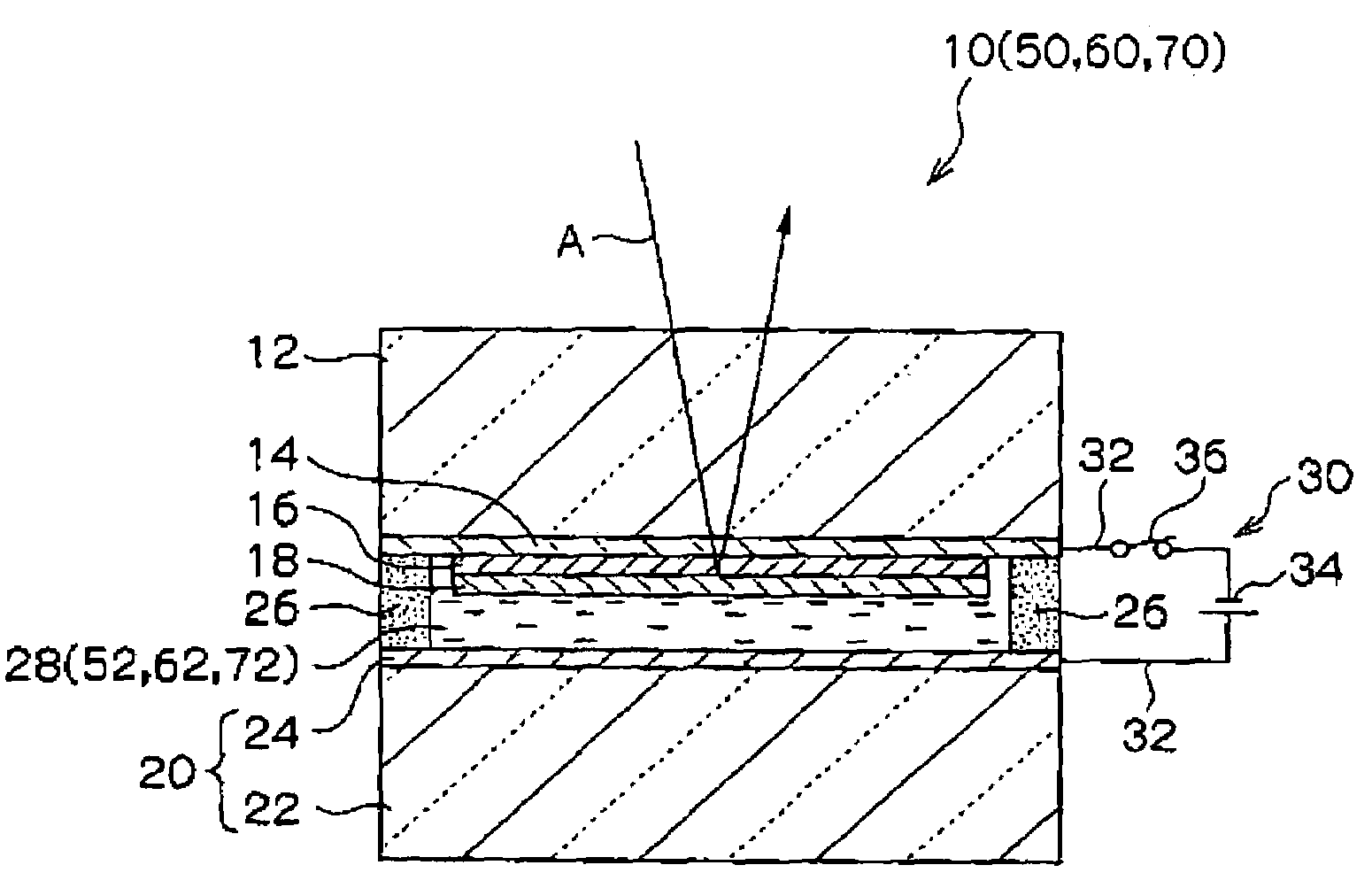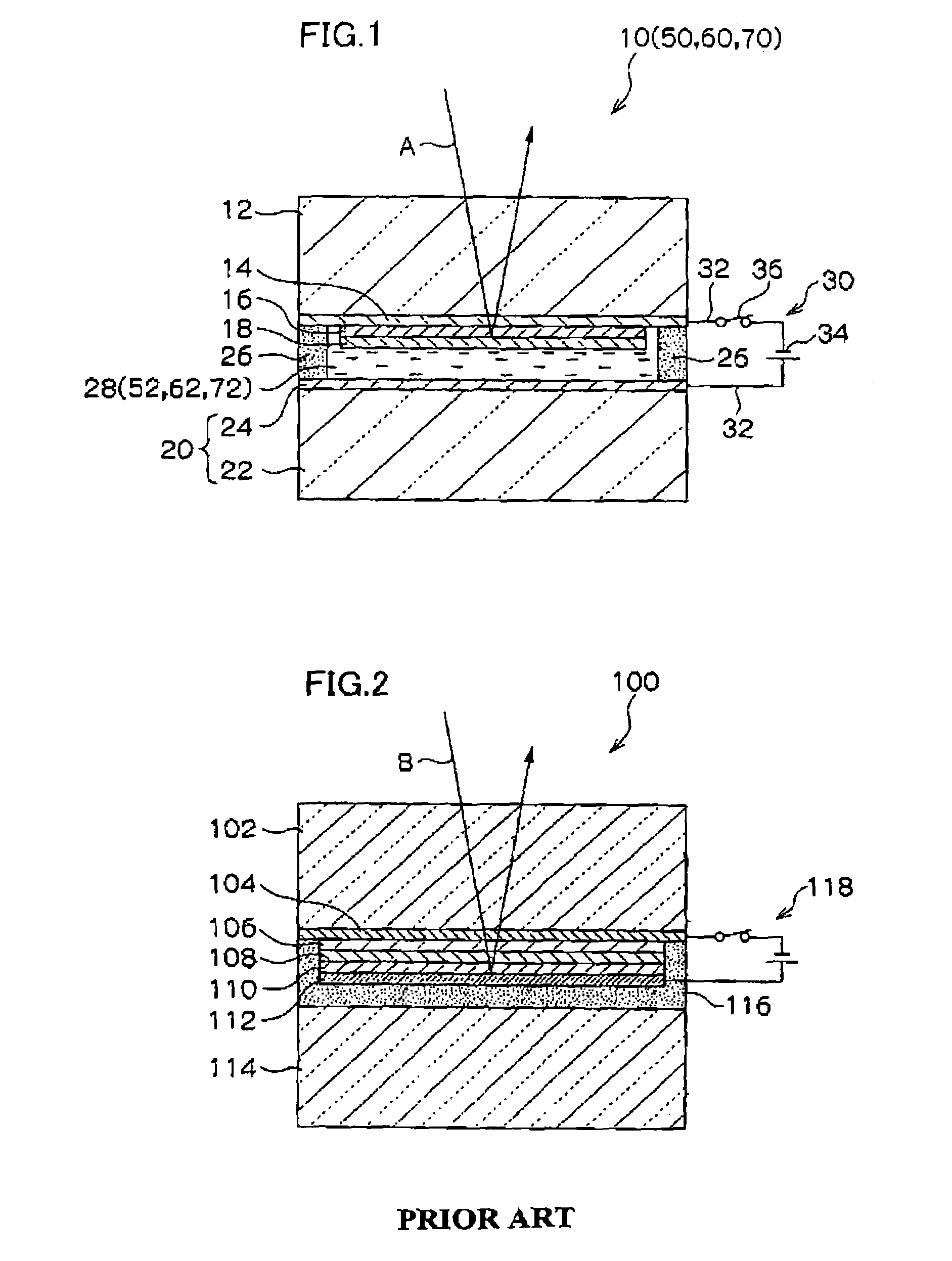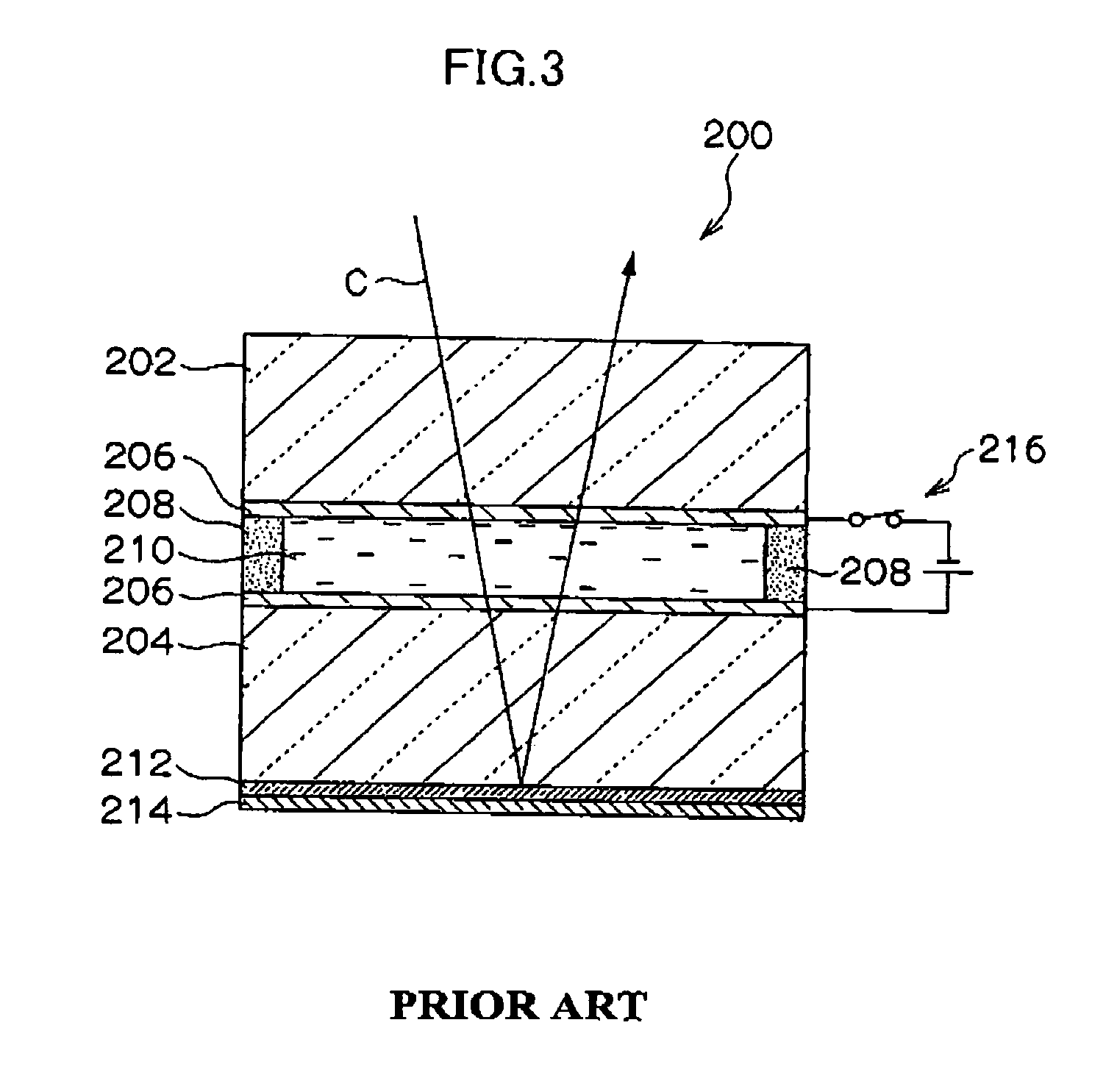Electrochromic mirror having variable reflectivity
a technology of reflectivity and mirror, applied in the field of rearview mirror, can solve the problems of high production cost, inability to form multi-layer films using vacuum deposition, and thin films that become colored once may not return to their original state, etc., and achieves the effects of low cost, simple structure and convenient manufacturing
- Summary
- Abstract
- Description
- Claims
- Application Information
AI Technical Summary
Benefits of technology
Problems solved by technology
Method used
Image
Examples
first embodiment
[0060]FIG. 1 is a cross-sectional view of the construction of the electrochromic mirror 10 of a first embodiment of the invention.
[0061]The electrochromic mirror 10 has a glass substrate 12 which is a transparent substrate. A transparent electrode film 14 is formed in the form of a thin film on the back surface of the glass substrate 12 by vacuum deposition or the like (the surface at the lower side in FIG. 1). The transparent electrode film 14 is a so-called “ITO film” made of a mixture of indium oxide and tin oxide in the first embodiment.
[0062]An electrochromic film 16 which can be colored by reduction is formed in the form of a thin film on the transparent electrode film 14 by vacuum deposition or the like. The electrochromic film 16 is made of tungsten trioxide (WO3) in the first embodiment.
[0063]A light reflecting film 18 is formed in the form of a thin film on the electrochromic film 16 by vacuum deposition or the like. The light reflecting film 18 is made of rhodium in the f...
second embodiment
[0084]Next, the second embodiment of the invention will be described. The same structure and action as those of the first embodiment are designated by the same reference numerals as in the first embodiment, and descriptions thereof are omitted.
[0085]As shown in FIG. 1, an electrochromic mirror 50 of the second embodiment has the same structure as that of the electrochromic mirror 10 of the first embodiment, except that an electrolytic solution is different from that of the first embodiment. A solvent of the electrolytic solution 52 of the electrochromic mirror 50 is propylene carbonate, and the electrolytic solution 52 contains lithium perchlorate (LiClO4) as a lithium ion agent and ferrocene (Fe(C5H5)2) which is a neutral material as a redox agent.
[0086]When the switch 36 of the power supply 30 is turned on in the electrochromic mirror 50, a negative voltage is applied to the transparent electrode film 14 and a positive voltage is applied to the electrode film 24 by the direct-curr...
third embodiment
[0095]Next, the third embodiment of the invention will be described. The same structure and action as those of the first embodiment are designated by the same reference numerals as in the first embodiment, and descriptions thereof are omitted.
[0096]As shown in FIG. 1, an electrochromic mirror 60 of the third embodiment has the same structure as that of the electrochromic mirror 10 of the first embodiment, except that an electrolytic solution is different from that of the first embodiment. A solvent of the electrolytic solution 62 of the electrochromic mirror 60 is propylene carbonate, and the electrolytic solution 62 contains ferrocyanic acid (H4[Fe(CN)6])as an electrolyte.
[0097]When the switch 36 of the power supply 30 is turned on in the electrochromic mirror 60, a negative voltage is applied to the transparent electrode film 14 and a positive voltage is applied to the electrode film 24 by the direct-current power supply 34. As a result, reduction reaction which is the same as the...
PUM
| Property | Measurement | Unit |
|---|---|---|
| electrochromic | aaaaa | aaaaa |
| transparent | aaaaa | aaaaa |
| conductivity | aaaaa | aaaaa |
Abstract
Description
Claims
Application Information
 Login to View More
Login to View More - R&D
- Intellectual Property
- Life Sciences
- Materials
- Tech Scout
- Unparalleled Data Quality
- Higher Quality Content
- 60% Fewer Hallucinations
Browse by: Latest US Patents, China's latest patents, Technical Efficacy Thesaurus, Application Domain, Technology Topic, Popular Technical Reports.
© 2025 PatSnap. All rights reserved.Legal|Privacy policy|Modern Slavery Act Transparency Statement|Sitemap|About US| Contact US: help@patsnap.com



